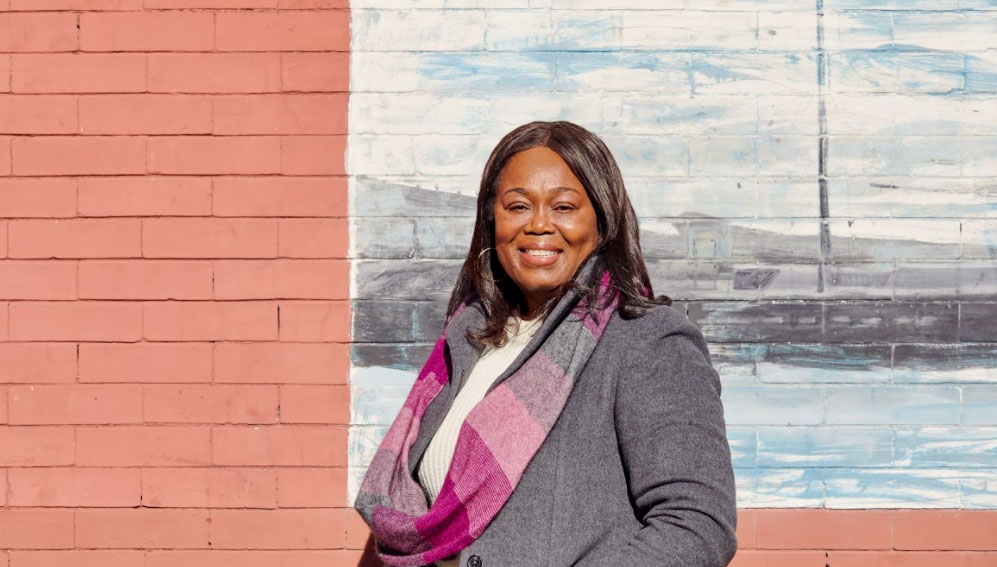Teaching empathy has long been a challenging endeavor because it’s generally a skill that gets built through experience. But today’s business leaders are nonetheless expected to develop employees’ empathy skills so they can better understand customers, de-escalate anger, and build relationships.
When role-playing and other traditional methods did not deliver the results her team was looking for, Cleo Scott, Director of Global L&D for Verizon Business Services, rolled out an Immersive Learning program. She paints a very human picture of a technology that better equips Verizon’s frontline employees for conversations with high- value commercial customers.
Why is empathy so critical in a situation where emotions tend to run high?
When people think about frontline employees engaging with customers, it’s usually in an environment where a customer calls in pretty innocently with an issue — and then sometimes it escalates. But our customers are tier one companies that rely on the Verizon network to run their businesses. The only times they call us are when something is wrong, and at that point, they’re irate. It’s not a build-up; it’s immediate.
We obviously have to respond quickly and fix the problem. But we also want to make the customer feel that we did all that we could to understand them. We need to be able to immerse people in an experience with a customer before they can provide live customer service.
When we looked at the amount of time we spent, year over year, on role-plays and simulations, we would see improvements in performance. We would plateau. And we would come down. But we weren’t seeing consistent and sustained adoption of the empathy and communication skills we needed our frontline workers to have. That’s when we considered VR-based Immersive Learning.
We need to be able to immerse people in an experience with a customer before they can provide live customer service.
How does VR lend itself to teaching empathy?
With VR, the person in the learner seat is actually looking at another person talking to them — an avatar. They’re hearing another person’s real voice. It’s an ‘aha’ moment when they realize the voice they’ve only heard on the phone or engaged with in a chat message is actually a real person, not just another company. They now think, “I need to act with urgency and do what I can to leave this customer feeling cared for.”
Our reason for using VR for this particular subject is that we were trying to replicate something — customer behavior — that was impossible to replicate in another way. We knew that we wanted to grab the emotions of the employee and feel a certain urgency. We thought VR might be the answer, and we were right.
In addition to helping customers, what kind of business impact has Immersive Learning had on Verizon employees?
Our approach at Verizon is to really focus on our employees, take care of them, and make sure they have the skills they need. That’s how we get customer satisfaction and, in turn, shareholder value.
In the VR experience, employees practiced handling a tough conversation – actually speaking out loud and reacting in real time. Then, they got a chance to switch seats with the customer and hear the playback of their own responses. Our employees walked out of their first VR session with eye-opening awareness around their blind spots. We heard feedback like, “Gosh I didn’t realize how I was serving the customer. I think I would’ve been more irate if that’s how someone was handling my call.”
As they went back to work and we tracked their progress through supervisors, we found that employees were much more confident because they were more aware of how they were handling the customers.
In terms of measurable value, prior to Immersive Learning, each employee received around ten hours of training around empathy, including an in-person workshop, pre- and post-work, and leader coaching. With VR, we have thirty minutes of immersion around the same topic. When you start to calculate the number of employees times the number of hours, that’s significant savings for the company. In addition, the consistency and scalability of the training is a major value-add, since the previous solution was much more difficult to replicate and scale.
What’s next for corporate training?
As we in corporate America have stayed home for a long time because of the COVID-19 situation, and experimented with things like homeschooling and distance learning, we have found that our learners and business owners are more accepting of trying different ways of doing things. Right now, we have a huge need for distance learning. How might we take a technology like VR and power complex content delivery to wherever you are?
We’re optimistic that VR is going to be one of the best tools we use in the future of learning at Verizon, helping us immerse our trainees in building customer empathy and other critical skills.
We’re optimistic that VR is going to be one of the best tools we use in the future of learning at Verizon.




